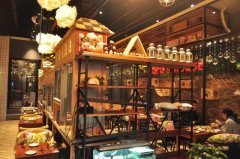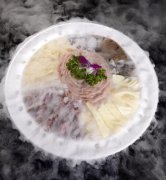Update Time:2018-08-12Click:259

The fashion arena's evening wear is perhaps the most theatrical and vibrant incarnation of style, where innovation meets elegance, mirroring epochs, cultures, and societies. From the sumptuous gowns of the Victorian era to today's edgy, modern silhouettes, evening attire has travelled through time, each phase speaking to its prevailing zeitgeist. This journey defines the continually evolving notion of 'glamour.'
During the Victorian era (1837-1901), evening gowns were lavish expressions of opulence and status. Women showcased their wealth through extravagantly designed dresses featuring lustrous fabrics, intricate embroidery, feathers, and jewels. The hoop skirt was a quintessential element, symbolizing the epitome of femininity.
However, with the onset of the 20th century, Edwardian fashion (1901–1910) introduced a softer, more comfortable aesthetic for evening wear. Well-tailored gowns emphasized the wearer's natural form, employing delicate laces, pastel hues, and flower motifs while maintaining the essence of refinement.
The Roaring Twenties (1920–1929) saw a significant shift in evening wear's design ethos as women's roles in society changed radically. Glitzy flapper dresses with fringe details, sequins, and low-waist cuts reigned supreme, reflecting an overall tone of rebellion and liberation. These dresses echoed a new era of freedom, both fashionably and socially, for women.
As the world plunged into the Great Depression in the 1930s, fashion responded with conservatism and simplicity. Bias-cut silk gowns, which emphasized the natural body shape, became a popular choice for evening wear. Although less ornate, these designs radiated a unique allure and understated elegance.
Post World War II, Christian Dior debuted his 'New Look' in the 1950s, radically changing the silhouette of evening wear. Full-skirted ball gowns symbolizing femininity and luxury came back into style.
The invention of synthetic materials revolutionized fashion in the 1960s, and evening wear was no exception. The rise of cocktail culture popularized the mini skirt. Swinging London's Mod scene brought forth unconventional materials like vinyl and metal into formal wear, showcasing a bold and daring approach.
The super glam 1970s was all about disco vibes, highlighting long, flowing gowns, jumpsuits, and shimmering fabrics. Halter necks and revealing cuts were key features, echoing the era's adventurous spirit in evening attire.
Power suits entered the realms of evening wear in the 1980s, reflecting the rise of women in the corporate world. Big shoulders, bright colours, and metallic fabrics emulating wealth and status were typical. Evening wear saw more and more pantsuits, breaking norms correlating women’s formal wear exclusively with dresses.
With the dawn of the 21st Century, evening wear evolved more dynamically than ever before. Today, we see a mix of past decades' influences, technological advances, and personalized styles. Sustainability has become a pivotal factor in the design and production of modern evening wear, with designers increasingly opting for ethically sourced materials and responsible production methods.
Moreover, the rise of gender-fluid fashion has blurred the boundaries of traditional evening wear. Men are donning sequined suits, ruffled shirts, and even skirts, while women are making statements in tuxedo dresses and sharply tailored suits.
As we sail through the 2020s, evening wear continues to embody two core concepts – comfort and individualism. Designers and wearers alike are redefining what constitutes 'formal,' breaking away from rigid norms and welcoming a broader array of styles.
Evening wear's journey tells us the story of society's evolution, mirroring changes in social norms, gender roles, economic environments, and technological advancements. Each phase of glamour has its distinct character and charm, shaped by time, place, and the ever-transformative power of fashion. The evolution of glamour is truly a testament to fashion's timeless rhythm, paying homage to the past, celebrating the present, and eagerly inviting the future.
What are some examples of non-renewable resources used in the production of fast fashion
Vintage Vibe The Resurgence of Past Decades in Contemporary Fashion
Untangling Threads Prognosticating Trends and Shifts in the Future of Menswear
Crafting Alter Egos Unveiling the Confluence of Creativity and Self-expression in Cosplay Fashion

Unleashing Creativity: Fashion Trends Inspired by Art

2024’s Top Fashion Trends: An Exclusive Look

What are some examples of non-renewable resources used in the production of fast fashion

Vintage Vibe The Resurgence of Past Decades in Contemporary Fashion

Untangling Threads Prognosticating Trends and Shifts in the Future of Menswear

Casual-Luxe Defined Blending Comfort with Luxury in Fashion

Color Trends of 2024 Bridging Gaps in Fashion and Interiors

Crafting Alter Egos Unveiling the Confluence of Creativity and Self-expression in Cosplay Fashion

Decoding the Athleisure Trend High-fashion Meets Gym Wear

Defining Glamour The Evolution of Evening Wear